The term “residential land” is not a legal term but a colloquial term used by the people, including land that parents divide among their children. Today, let’s explore the conditions for subdividing residential land and how to subdivide land for your children.
1 Requirements for Land Subdivision and Amalgamation
First, you must have a Land Use Rights Certificate and own the land to be able to subdivide it. If you don’t have the Land Use Rights Certificate in your name, you need to apply for it before proceeding with the subdivision.
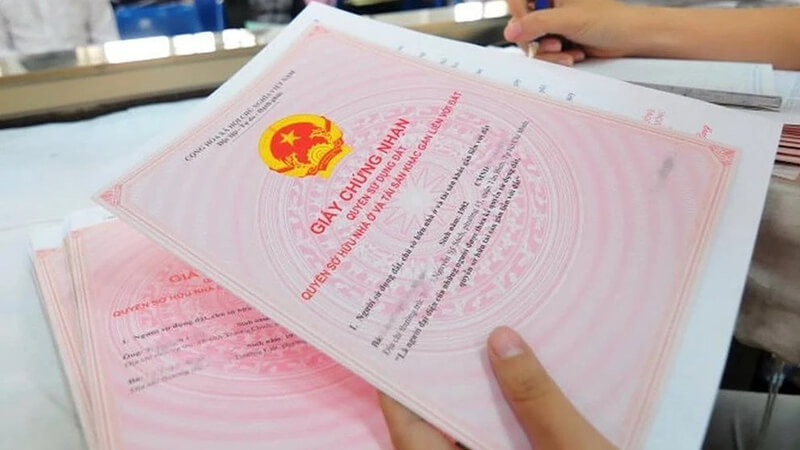 Obtain a Land Use Rights Certificate
Obtain a Land Use Rights Certificate
Secondly, if you already have a Land Use Rights Certificate and wish to subdivide the land, you must meet the minimum area requirements for subdivision. To find out the minimum area allowed for subdivision for specific types of land, please contact the People’s Committee in your locality for more information.
If a state agency refuses your subdivision request due to “land being in the planning stage,” you have the right to request that the agency provide information to clarify this issue.
 Planned land will have restricted land use rights
Planned land will have restricted land use rights
Additionally, note the regulations under Clause 2 and 3 of Article 49 of the 2013 Land Law regarding land use. When there is a land use plan, and your land is included in the annual plan, your land use rights will be restricted.
However, if you have a land use plan but no annual plan, and the state agency has not notified or decided to revoke the land area, you can still exercise your rights as a land user, including the right to subdivide and obtain separate land-use certificates.
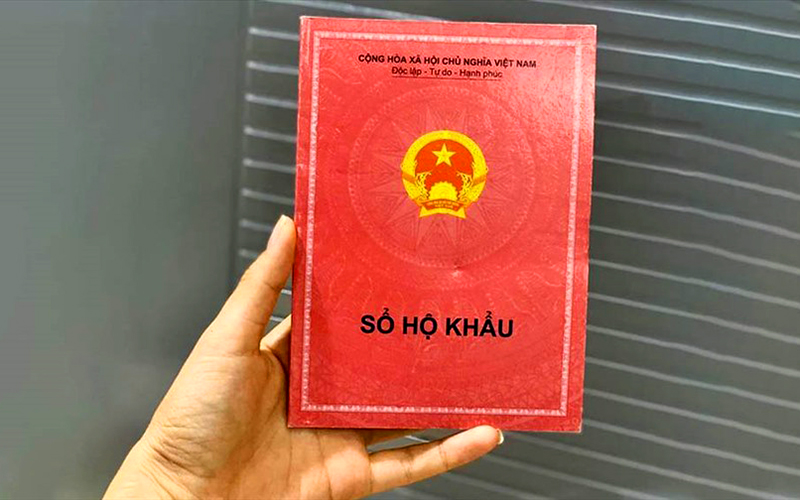 Permanent residence registration is required for the Land Use Rights Certificate
Permanent residence registration is required for the Land Use Rights Certificate
Thirdly, to be eligible for a Land Use Rights Certificate, you must have a permanent residence registration (household registration) in the locality and have a stable basis for land use without any land disputes.
2 Procedures for Land Subdivision and Amalgamation
Land Subdivision Dossier and Process
According to Clause 11, Article 9 of Circular No. 24/2014/TT-BTNMT, the dossier for land subdivision and change registration includes:
- An application form for land subdivision or amalgamation (Form No. 11/ĐK).
- The original Land Use Rights Certificate.
- Technical drawings of the land lot (if required).
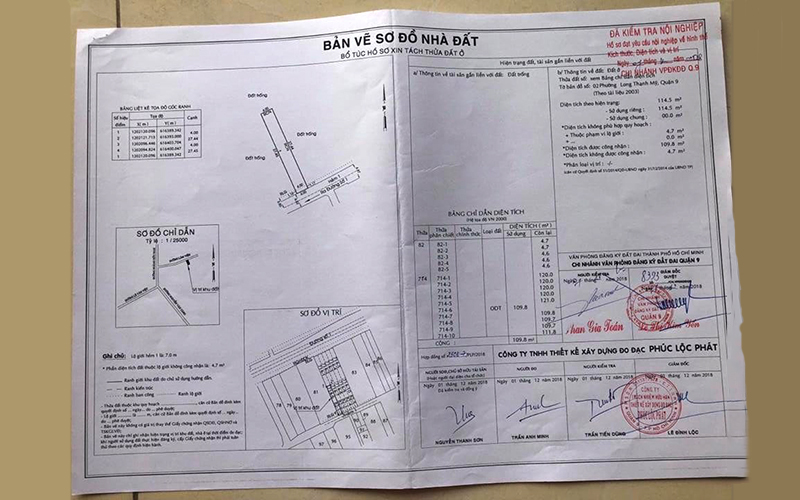 Technical drawings of the land lot
Technical drawings of the land lot
According to Article 75 of Decree No. 43/2014/ND-CP, the procedure for land subdivision or amalgamation is as follows:
– The land user submits a dossier for land subdivision or amalgamation.
– The Land Registration Office is responsible for the following tasks:
- Conducting land surveys for land subdivision.
- Preparing and submitting a dossier to the competent authority for the issuance of Land Use Rights Certificates for new land lots resulting from the subdivision or amalgamation.
- Updating changes in the land registry, land database, and issuing Land Use Rights Certificates to the land user or sending them to the People’s Committee at the communal level for delivery if the dossier was submitted at that level.
 Conducting land surveys for land subdivision
Conducting land surveys for land subdivision
In the case of land subdivision due to the transfer of a portion of the land use rights or the resolution of disputes, complaints, denunciations, land auctions, or the division of households, groups of land users, or the handling of mortgage contracts, capital contributions, or seizures and auctions of land use rights for enforcement purposes (also known as transfer of rights), the Land Registration Office shall perform the following tasks:
- Conduct land surveys for land subdivision.
- Implement the procedures for registration of changes as prescribed in this Decree for the transferred portion of the land; at the same time, confirm the changes in the issued Land Use Rights Certificate or submit a dossier to the competent authority for the issuance of Land Use Rights Certificates for the remaining portion of the land not subject to the transfer of rights; update changes in the land registry and land database and deliver the certificate to the land user or send it to the People’s Committee at the communal level for delivery if the dossier was submitted at that level.
 Implementing procedures for registration of changes
Implementing procedures for registration of changes
In the case of land subdivision due to state retrieval of a portion of the land, the Department of Natural Resources and Environment shall direct the Land Registration Office to base the retrieval decision of the competent state agency to perform the following tasks:
- Conduct land surveys, make corrections to land maps, land records, and the land database.
- Confirm changes in the issued Land Use Rights Certificate and deliver it to the land user or send it to the People’s Committee at the communal level for delivery if the dossier was submitted at that level.
Procedure for Land Subdivision for Children
After preparing the necessary documents, you can submit the dossier in one of the following two ways:
- Method 1: Households and individuals can submit the dossier to the People’s Committee of the commune, ward, or town where the land is located if they wish to do so.
- Method 2: Do not submit the dossier to the People’s Committee of the commune, ward, or town where the land is located.
Submit the dossier to the one-door division if the locality has established a one-door division to receive and return results of administrative procedures. Or submit the dossier to the branch of the district-level Land Registration Office (district, town, provincial city, or city under the central government) or the Land Registration Office if the locality has not organized a branch of the Land Registration Office and has not established a one-door division to receive the dossier.
– If the dossier is incomplete or invalid, the agency receiving and processing the dossier must notify and guide the applicant to supplement the dossier within a maximum of 03 days.
– The agency receiving the dossier shall fill in the information in the dossier reception book and give the dossier reception ticket to the applicant (stating the date of the appointment for the result).
 Procedure for land subdivision for children
Procedure for land subdivision for children
The results must be delivered to the land user within a maximum of 03 working days from the date of resolution.
Time Frame for Resolution
According to Clause 40, Article 2 of Decree No. 01/2017/ND-CP, the time limit for land subdivision is 15-25 days from the date of receiving a valid dossier; and for mountainous, island, remote, or difficult socio-economic conditions, the time limit is 25-35 days (excluding holidays and weekends).
3 Frequently Asked Questions about Land Subdivision and Amalgamation
What are the fees for land subdivision and amalgamation procedures?
According to Clause 1, Article 4 of the Consolidated Text No. 15/VBHN-VPQH Consolidating the Law on Personal Income Tax: Income from the transfer of real estate between spouses; biological parents and children; adoptive parents and adopted children; parents-in-law and children-in-law; grandparents and grandchildren; uncles, aunts, and nephews or nieces is exempt from personal income tax.
According to the above regulation, land subdivision between biological parents and children is exempt from personal income tax. In this case, you need to provide documents proving the relationship between the person performing the land subdivision and the recipient of the transfer, such as your birth certificate.
 Fees for land subdivision and amalgamation procedures
Fees for land subdivision and amalgamation procedures
According to Article 5 of Circular No. 301/2016/TT-BTC, guiding the pre-registration fee: Houses and land inherited or gifted between: spouses; biological parents and children; adoptive parents and adopted children; parents-in-law and children-in-law; grandparents and grandchildren; uncles, aunts, nephews, or nieces, which are now subject to the issuance of Land Use Rights Certificates, ownership of houses and other assets attached to the land by competent state agencies.
In addition, the fees to be paid include:
- Survey fees: Usually from VND 1.8 – 2 million/time (the price may vary depending on the surveying unit).
- Land Use Rights Certificate issuance fee: Determined by the Provincial People’s Council but not exceeding VND 100,000/certificate/time of issuance).
Sample Application Form for Land Subdivision and Amalgamation
The sample application form for land subdivision and amalgamation is Form No. 11/ĐK, which can be downloaded here: Here. Fill in the information and print the form.
What is the procedure for changing the name on the Red Book (Land Use Rights Certificate)?
The procedure for changing the name on the Red Book is an important procedure for registering gifts, transfers, and inheritance of land use rights (for land only), land use rights, and assets attached to the land (including land, houses, or assets related to the land).
The procedure includes mandatory requirements and a legal process. For more details, please refer to the article below.
For reference:
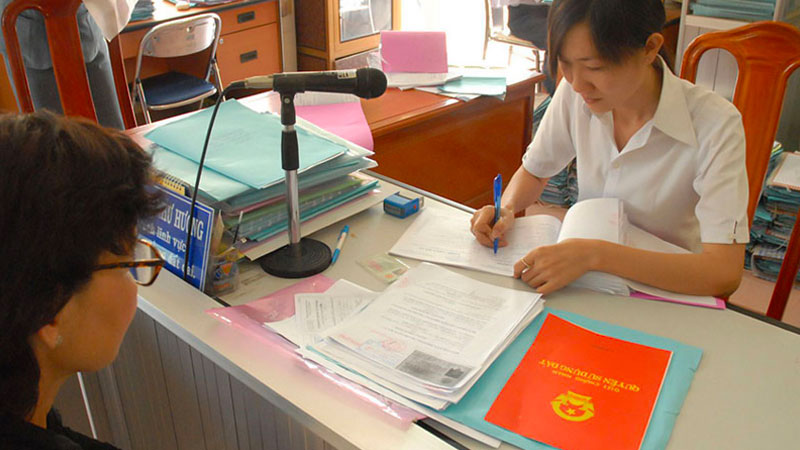 Procedure for changing the name on the Red Book
Procedure for changing the name on the Red Book
What is the minimum area for land subdivision as specified in the Law?
According to Clause 4, Article 144 of the 2013 Land Law, regarding the minimum area for land subdivision, the Provincial People’s Committee shall, based on the land use plan, urban construction planning, and the locality’s land fund, determine the land use quota allocated to each household and individual for self-construction of houses in cases where the conditions for land allocation according to investment projects have not been met; the minimum area for land subdivision for residential land.
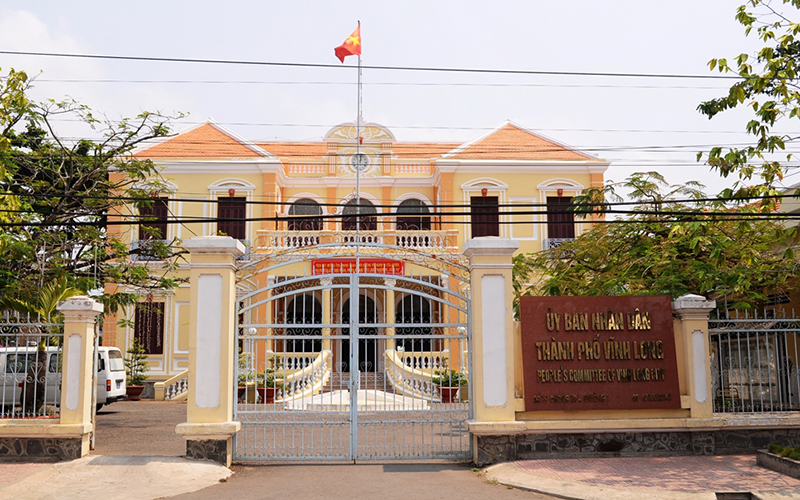 The Provincial People’s Committee determines the minimum area for land subdivision
The Provincial People’s Committee determines the minimum area for land subdivision
Additionally, Clause 2, Article 143 of the 2013 Land Law stipulates that, based on the locality’s land fund and the approved rural development plan, the Provincial People’s Committee shall determine the land use quota allocated to each household and individual for building houses in rural areas; the minimum area for land subdivision for residential land, taking into account local conditions and customs.
In summary, the determination of the minimum area for land subdivision is the responsibility of the Provincial People’s Committee where the land is located.
We have provided you with information on the conditions for subdividing residential land and the procedure for subdividing land for your children. Hopefully, through this article, you now have a better understanding of this procedure.


































